Abstract
Several mycoplasmas, from avian and mammalian sources, growing in the form of colonies on agar and sheets attached to plastic dishes, were tested for their ability to adsorb tissue culture cells in suspension. HeLa cells adsorbed to the majority of mycoplasmas tested; adsorption occurred to the sheets and not to the colonies of some mycoplasmas. Other tissue cells, in primary culture and of diploid origin, adsorbed also. The mechanism of adsorption of HeLa cells to 4 mycoplasmas was examined by treating the cells and mycoplasmas in various ways and then testing for adsorption. N-acetyl neuraminic acid residues on the tissue cells were responsible for adsorption to M. gallisepticum and M. pneumoniae. The receptors for M. hominis and M. salivarium were probably not of this kind since treatment of the cells with purified neuraminidase did not influence adsorption. However, the cell receptors for these mycoplasmas were associated with protein because they were inactivated by proteolytic enzymes and by formalin. The cell receptors for M. hominis were more heat stable than those for the other mycoplasmas. From the aspect of the mycoplasma membrane, in no instance did neuraminidase treatment affect adsorption. On the other hand, various experiments suggested that protein components of the mycoplasma membrane were involved. The significance of these findings is discussed.
Full text
PDF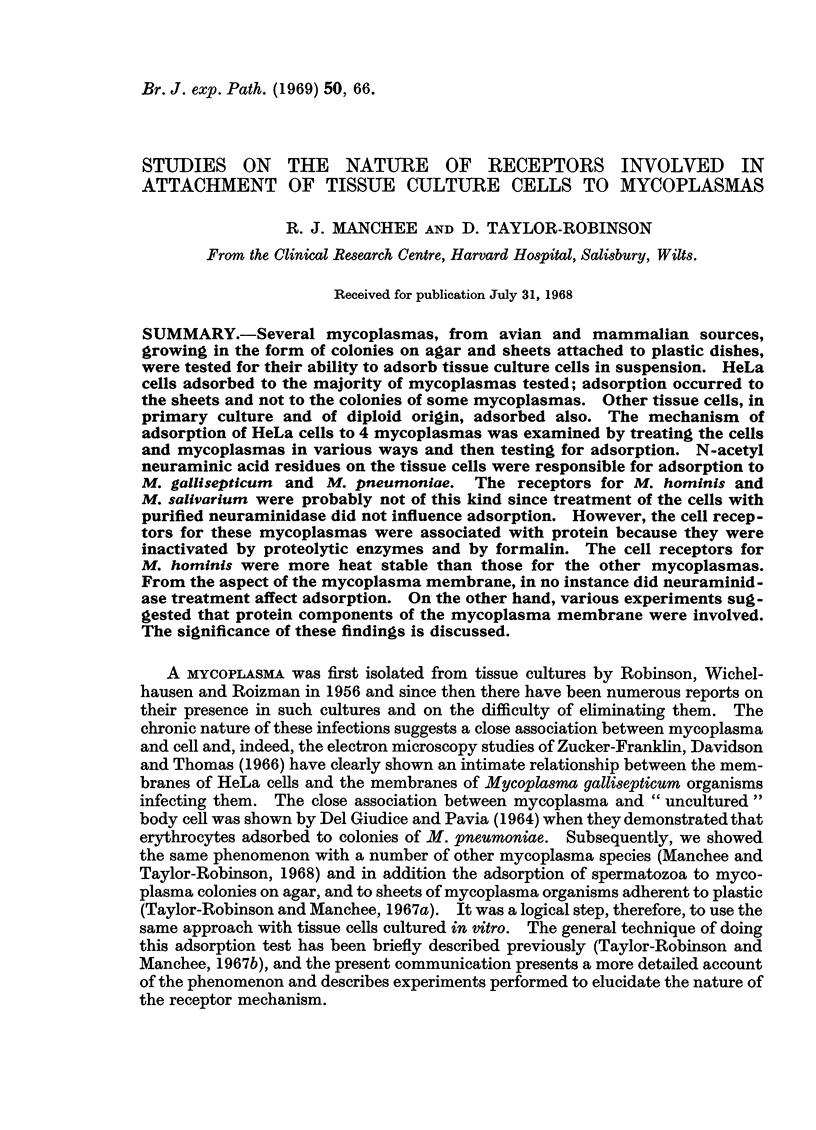
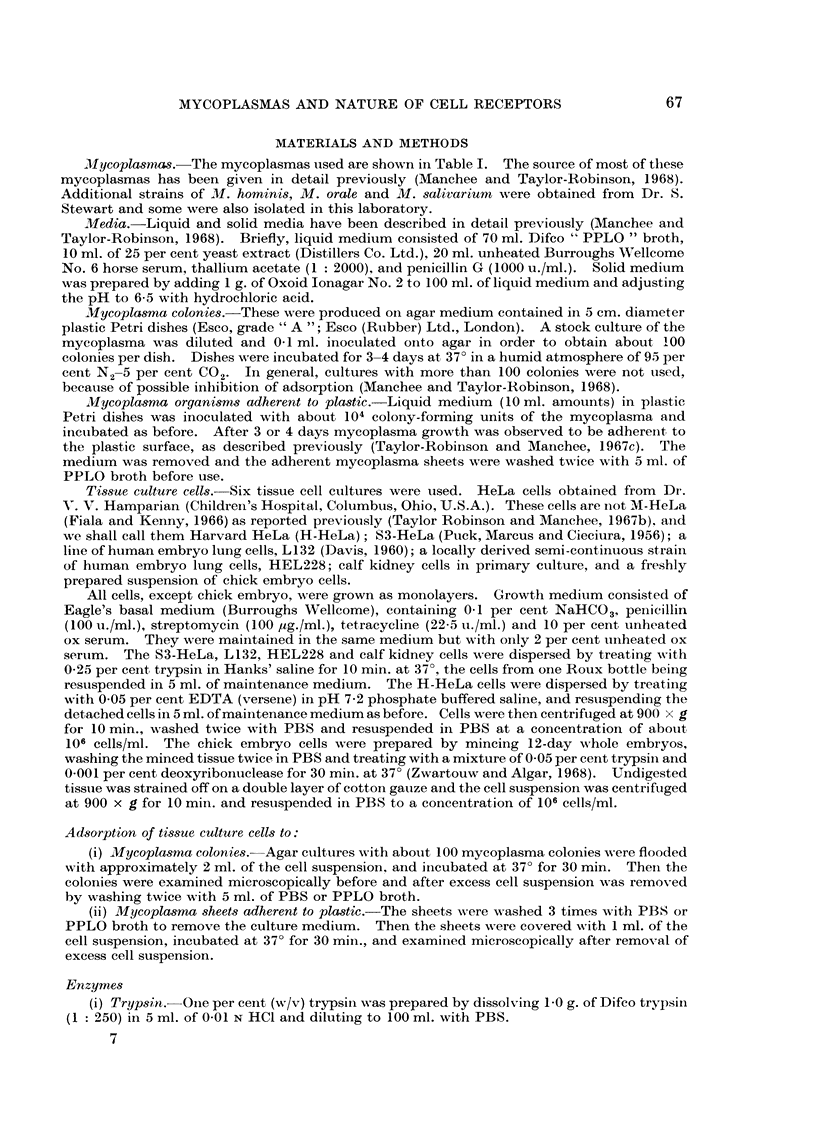
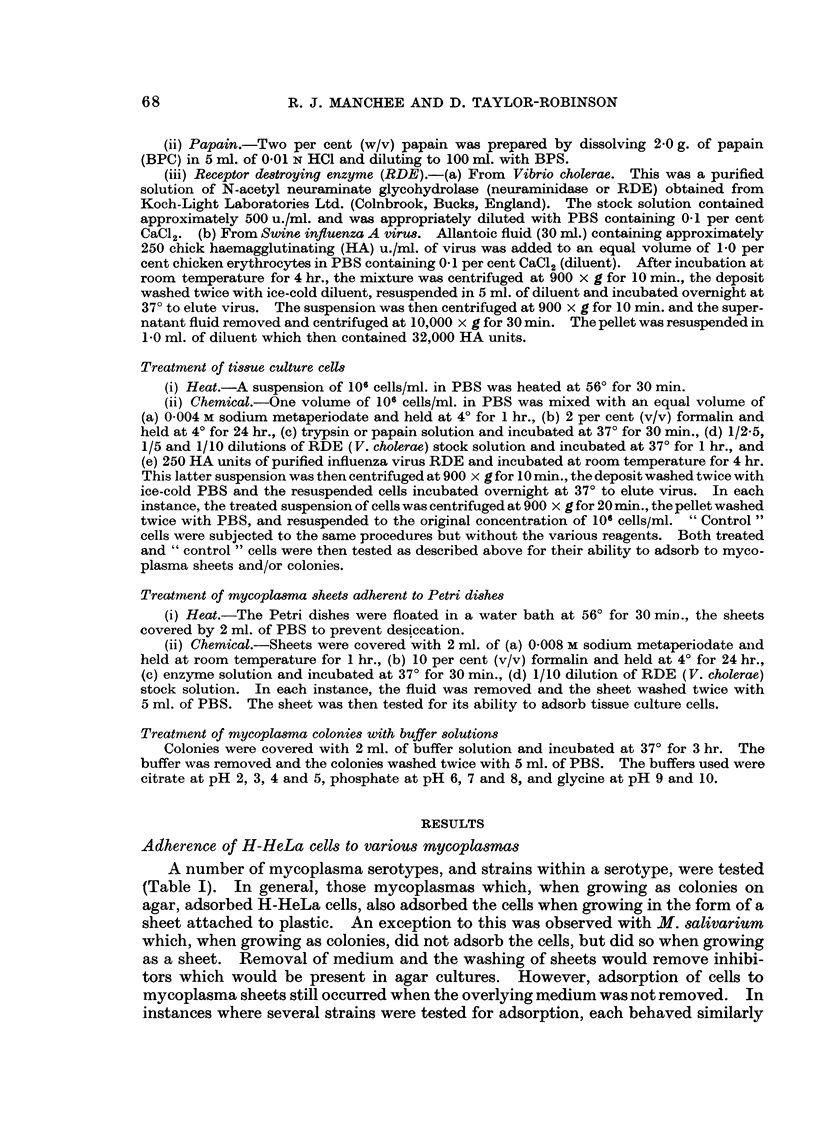
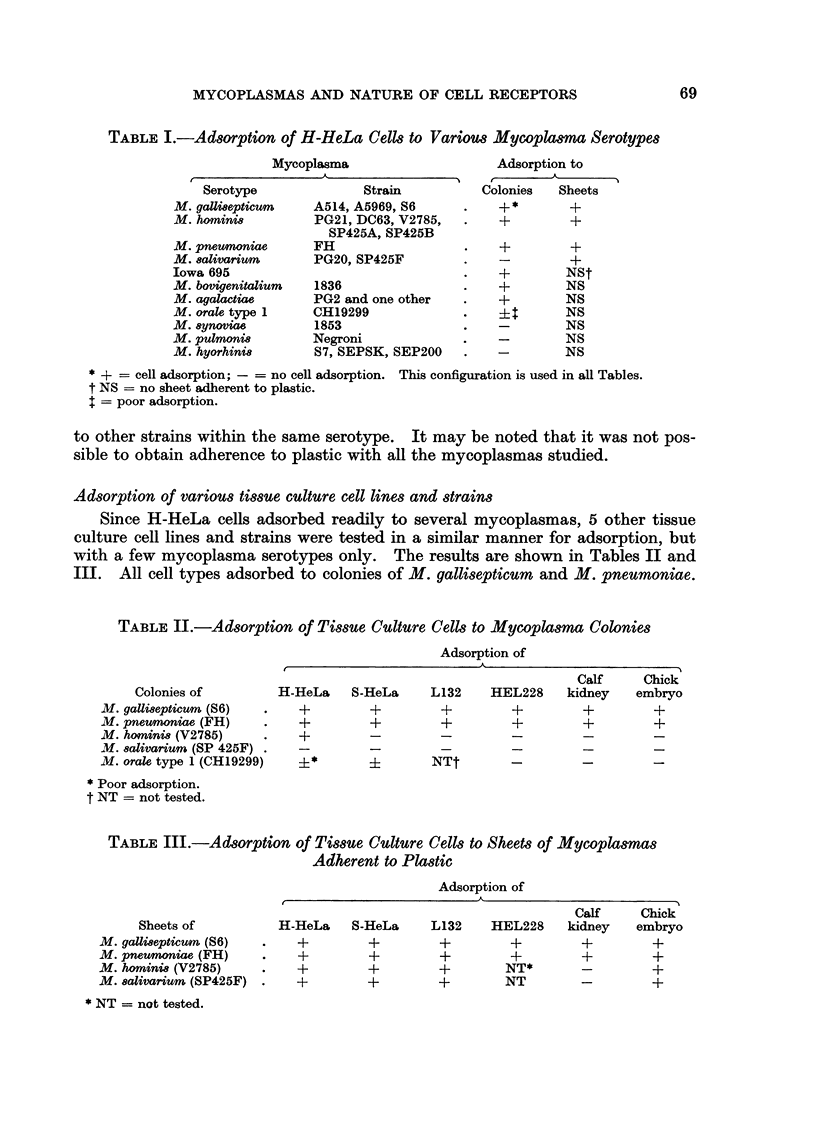
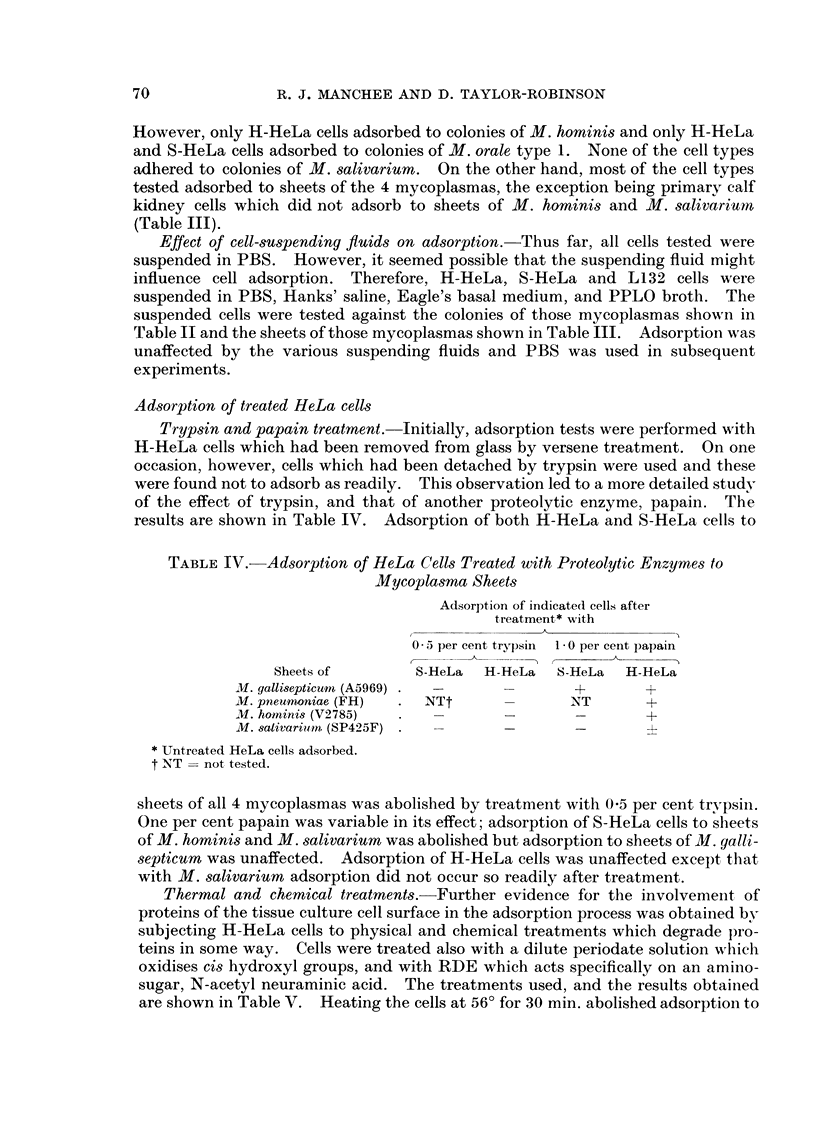
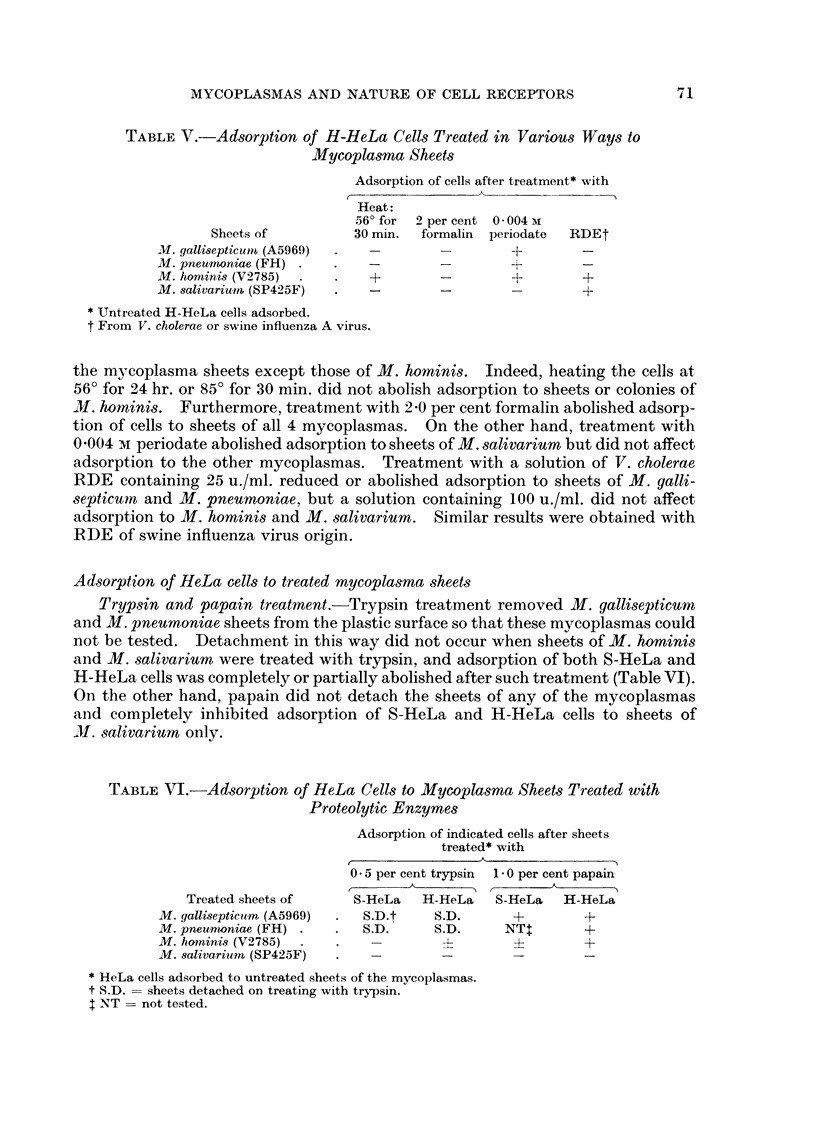
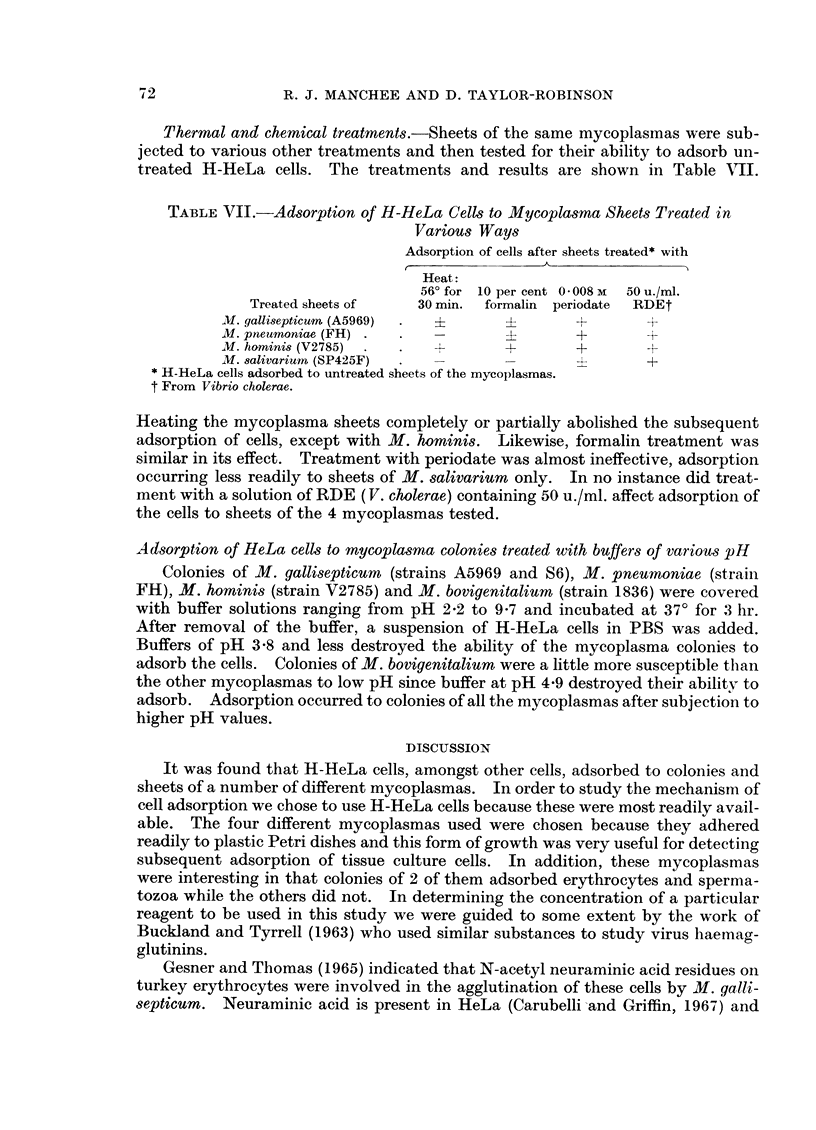
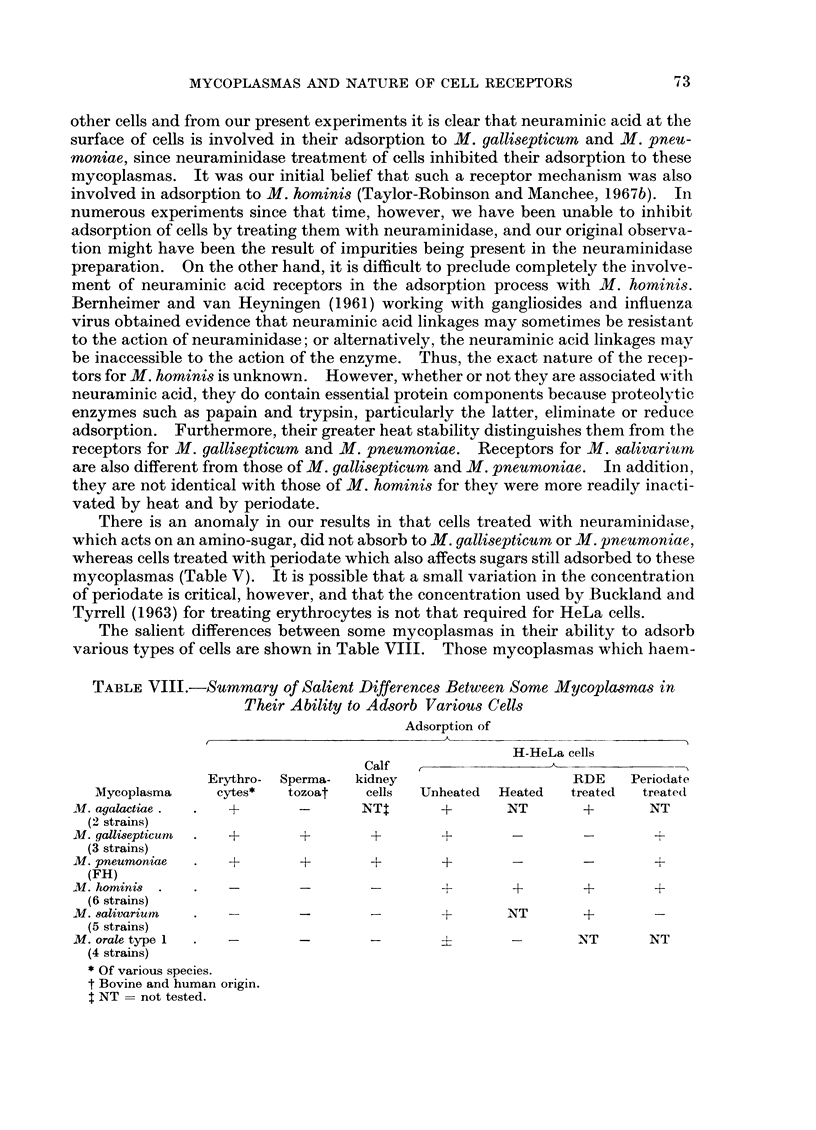
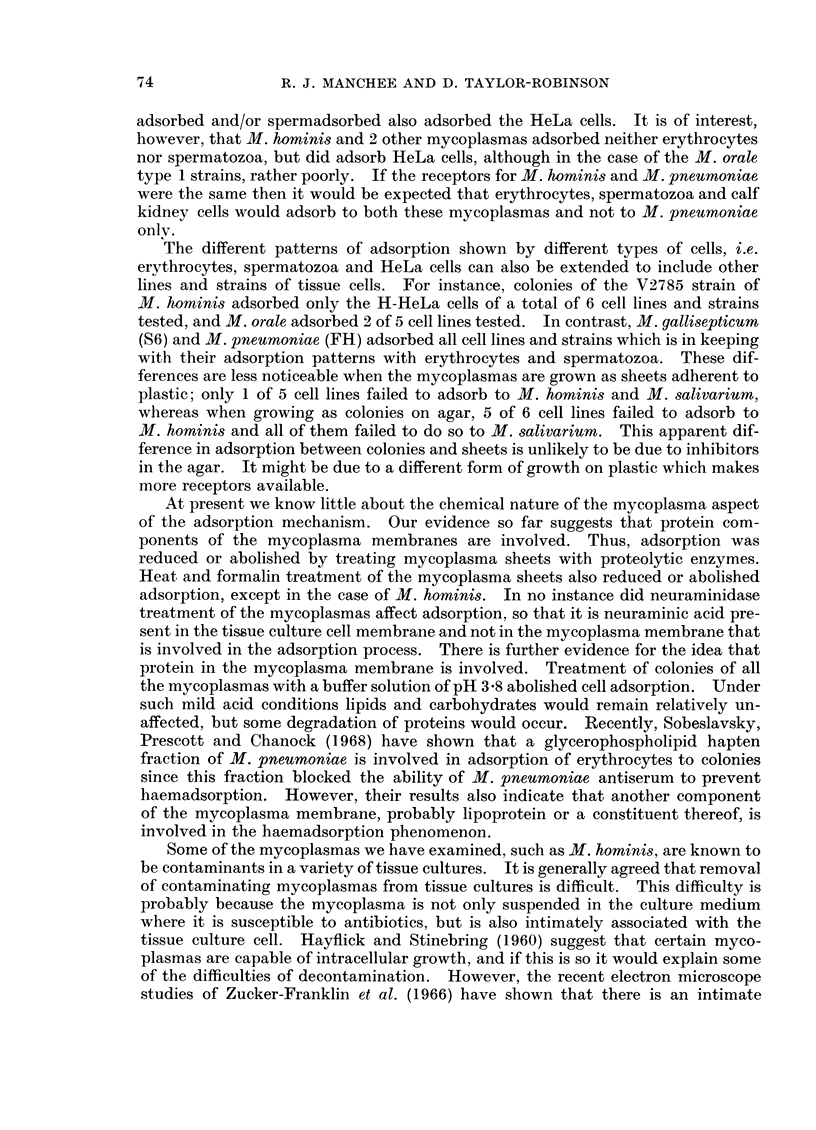
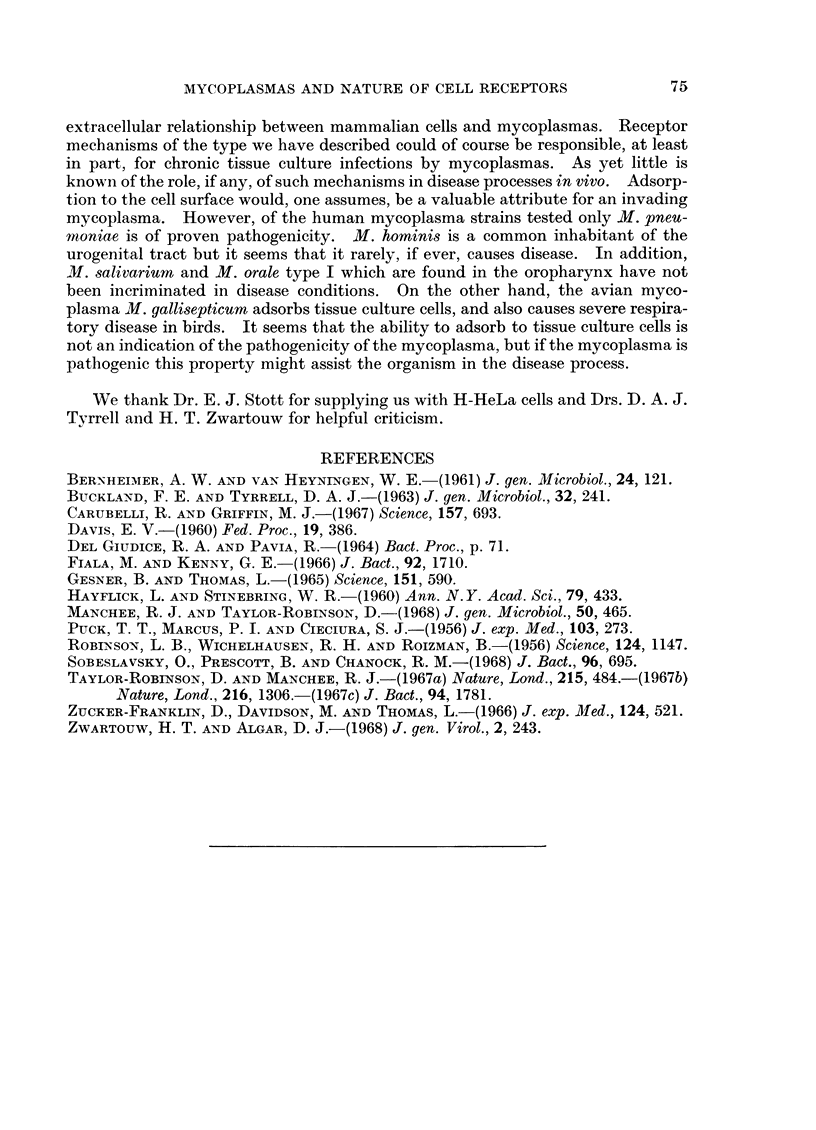
Selected References
These references are in PubMed. This may not be the complete list of references from this article.
- BUCKLAND F. E., TYRRELL D. A. A COMPARATIVE STUDY OF VIRUS HAEMAGGLUTININS. THE STABILITY OF HAEMAGGLUTININS AND RED CELL RECEPTORS TO CERTAIN PHYSICAL AND CHEMICAL TREATMENTS. J Gen Microbiol. 1963 Aug;32:241–253. doi: 10.1099/00221287-32-2-241. [DOI] [PubMed] [Google Scholar]
- Carubelli R., Griffin M. J. Sialic acid in HeLa cells: effect of hydrocortisone. Science. 1967 Aug 11;157(3789):693–694. doi: 10.1126/science.157.3789.693. [DOI] [PubMed] [Google Scholar]
- HAYFLICK L., STINEBRING W. R. Intracellular growth of pleuropneumonialike organisms (PPLO) in tissue culture and in ovo. Ann N Y Acad Sci. 1960 Jan 15;79:433–449. doi: 10.1111/j.1749-6632.1960.tb42709.x. [DOI] [PubMed] [Google Scholar]
- Manchee R. J., Taylor-Robinson D. Haemadsorption and haemagglutination by mycoplasmas. J Gen Microbiol. 1968 Mar;50(3):465–478. doi: 10.1099/00221287-50-3-465. [DOI] [PubMed] [Google Scholar]
- PUCK T. T., MARCUS P. I., CIECIURA S. J. Clonal growth of mammalian cells in vitro; growth characteristics of colonies from single HeLa cells with and without a feeder layer. J Exp Med. 1956 Feb 1;103(2):273–283. doi: 10.1084/jem.103.2.273. [DOI] [PMC free article] [PubMed] [Google Scholar]
- ROBINSON L. B., WICHELHAUSEN R. H. Contamination of human cell cultures by pleuropneumonialike organisms. Science. 1956 Dec 7;124(3232):1147–1148. doi: 10.1126/science.124.3232.1147. [DOI] [PubMed] [Google Scholar]
- Sobeslavsky O., Prescott B., Chanock R. M. Adsorption of Mycoplasma pneumoniae to neuraminic acid receptors of various cells and possible role in virulence. J Bacteriol. 1968 Sep;96(3):695–705. doi: 10.1128/jb.96.3.695-705.1968. [DOI] [PMC free article] [PubMed] [Google Scholar]
- Taylor-Robinson D., Manchee R. J. Novel approach to studying relationships between mycoplasmas and tissue culture cells. Nature. 1967 Dec 30;216(5122):1306–1307. doi: 10.1038/2161306a0. [DOI] [PubMed] [Google Scholar]
- Zucker-Franklin D., Davidson M., Thomas L. The interaction of mycoplasmas with mammalian cells. I. HeLa cells, neutrophils, and eosinophils. J Exp Med. 1966 Sep 1;124(3):521–532. doi: 10.1084/jem.124.3.521. [DOI] [PMC free article] [PubMed] [Google Scholar]
- Zwartouw H. T., Algar D. J. Growth of high-titre Semliki forest virus in concentrated suspensions of chick embryo cells. J Gen Virol. 1968 Mar;2(2):243–250. doi: 10.1099/0022-1317-2-2-243. [DOI] [PubMed] [Google Scholar]


